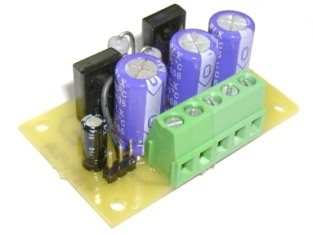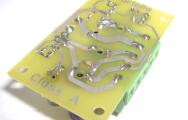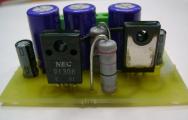Every beginner audiolabel always wants to collect or buy your first amplifier operating in class A, which becomes the starting benchmark for comparison and subsequent perception of loudspeakers. The class A amplifier has a maximum linearity, the most pleasant and high-quality sound, and total harmonic distortion (THD) in the regime of low output power approaches zero! Impressive?

But, as always, is the flip side of all these virtues is a very low efficiency. Efficiency is typically less than 15 - 30%. That is, to obtain an output power of 1 W is required to expend power six times more! Therefore, the class A amplifiers are most commonly used as a headphone amplifier, where the low efficiency can be neglected, or as output of the power amplifiers in expensive Hi-End devices.
Another disadvantage is the increase in CGT with increasing output power. This happens because the operating point of the transistor is moved in ever-widening arcs, starting to pass the nonlinear plots the graph of the output I-V characteristics of the transistor.
The figure below shows the circuit of the simple stereo headphone amplifierworking in class A. in spite of circuit simplicity, the amplifier has a fantastic sound with a powerful and soft bass (used Japanese audio transistors 2SD1308 firm NEC - 100% brand).

The gain slightly less than unity, so the scheme is resistant to feedback and negative feedback (EP) this amplifier is not needed. No EP is good for dynamic sound and its transparency, which gives a natural sound.
The quiescent current of the output stage is approximately equal to 200 mA and is set by resistors R1 and R3 for each channel. In the selection process it is necessary to control the voltage at the emitters of transistors - it should be equal to half of the supply voltage, that is 2.5 V. After a rough collection of resistors, it is necessary to allow the amplifier to warm up for 3 to 5 minutes, then repeat the process to Refine the values of the resistors. The fact is that after heating of the transistors collector current will change, so you need to allow the amplifier to warm up to its operating mode.
The transistors do not need heat sinks, but you can make a small General radiator - it will be easier to configure. The circuit has a bipolar compound (Darlington circuit) NPN audio transistor 2SD1308, but there may be others with high gain h21 and the corresponding structure. Capacitors C1 and C3 ceramic and is needed in the case when the amplifier will be powered from a USB port or other pulse source. Electrolytic capacitors should be at a voltage below 10 V. the Main technical characteristics of this amplifier are summarized in the table.
Feature
The value
The voltage, V
5
Consumption current, mA
340 420 ...
The quiescent current in each channel, mA
170 210 ...
Frequency range, Hz
10 ... 50 000
Uneven frequency response, ±dB
0,5
Total harmonic distortion, %
0,08
Rated power (RL = 32 Ω), mW
70
Maximum power (RL = 32 Ω), mW
125
Signal/noise ratio, dB
136
Input resistance, ohms
1,5
Output resistance, Ohms
0,5
Gain
0,9 0,95 ...
Overall dimensions, mm
55 x 34 x 20







